** Reprinted with permission from the October 1984 Arabian Horse World, no author credited. Top photo from Arabian Horse World January 1971, Lancer Arabians advertisement. Included in the January/February/March 1995 Stallion Issue of the Crabbet Influence.
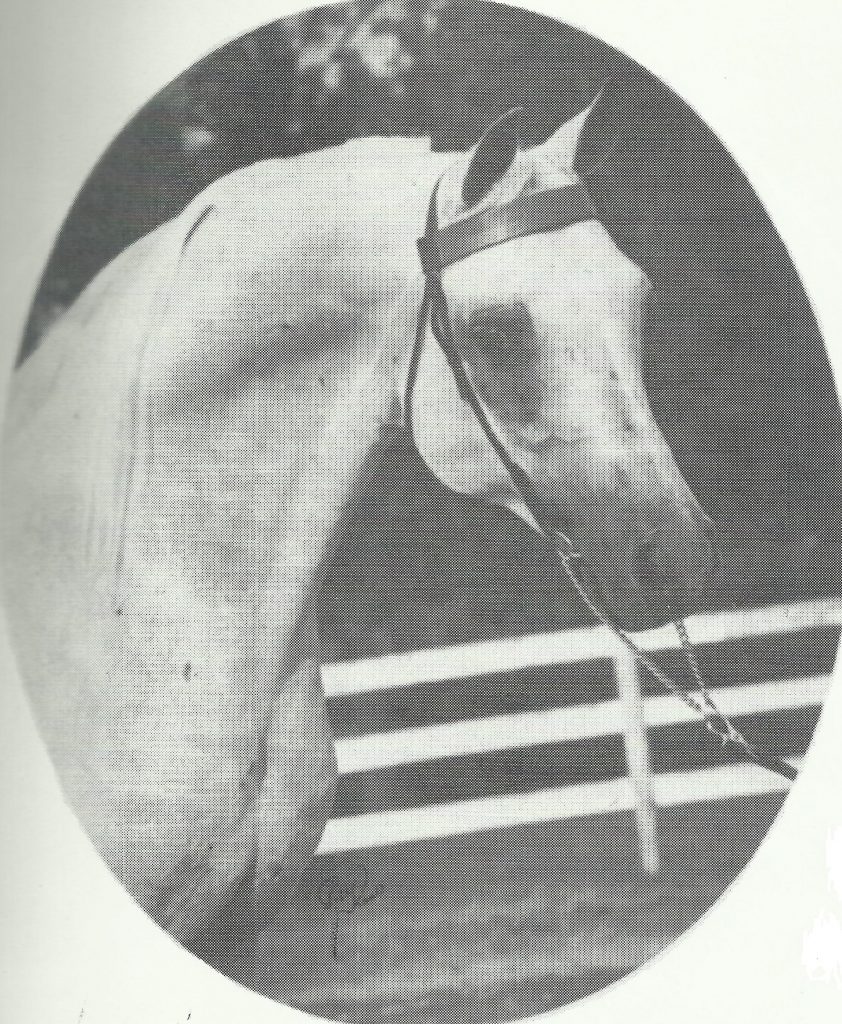
Sotep was bred by Alice Payne of Chino, CA, who owned *Raffles for the last four years of his life. Unlike most of her *Raffles foals, he was not *Raffles compounded through inbreeding, but rather the result of breeding *Raffles to Zareyna, a mare of Egyptian, Crabbet, and Davenport bloodlines.
Even though Sotep was officially bred by Alice Payne, he was also the product of the breeding wisdom of Mrs. Jeannette Morrill of the noted Bear Claw Ranch. Mrs. Morrill, an Arabian breeder since the early 1930s, visited Mrs. Payne’s Asil Arabian Ranch in 1952, took an appreciative look at Zareyna’s weanling filly Rose of Raswan by *Raffles, and offered to buy Zareyna if she could be rebred to *Raffles. She had purchased a *Raffles son Tut Ankh Amen (x *Roda) a few years earlier, liked what he sired, and wanted another *Raffles son.
Mrs. Morrill took Zareyna to Bear Claw Ranch, the Morrill family’s large cattle ranch near Dayton, WY, where she foaled Sotep on June 23, 1953, about six weeks after *Raffles died. The Bear Claw was a working ranch – not a dude ranch – and Sotep became a working cow horse, and he was bred to ranch-grade mares to produce cow ponies for ranch work. His first purebred foal was born in 1956 – a grey filly named Nehessa, out of Nefertiti (by Tut Ankh Amen). With few exceptions, Mrs. Morrill kept Sotep to herself. Only five outside mares were bred to Sotep; they were owned by S. Watts Smith and Jane Goodard Smyth of the Cross-U-Bar Ranch at Bog Horn, WY, and by Dr. O.E. Torkelson of Lusk, WY. Thirty-seven Sotep foals were bred by Mrs. Morrill.
In 1961, health problems forced Mrs. Morrill to give up the Bear Claw, and the Arabians were quietly dispersed. The new homes for the Bear Claw Arabians were carefully selected. He went to Walt and Carole Clark of JB Farm on Orcas Island, in the San Juan Islands off the coast of Washington. Mrs. Clark recalls, “Of course, we took Sotep immediately, along with a mare or two. We were one of only four breeders who were breeding intense Skowronek lines at that time, so Sotep with the two lines to Skowronek looked good to us. The four breeders were kind of a fountainhead of Skowronek breeding for people who wanted to continue with it or outcross theblood.”
Sotep came to JB Farm in 1961, and his first foals in the Northwest were born in 1963. “JB farm was in its heyday and great mares from all over the country came to Sotep,” Mrs. Clark remembers.
Early in 1969, another *Raffles fancier came onto the scene, Dr. James Rooker of Davidson, MI, came to Washington to return the *Raffles son Kubriya, whom he had on lease, to Jimmy Wrench who lived on Guemes Island near Anacortes. On that trip, Rooker bought mares from Jimmy Wrench and some Sotep mares from the Clarks. When he picked up the Clark mares, Walt Clark said, “We just aren’t breeding that many mares to Sotep here. Maybe you’d like to lease him.” Of course, he would. And Sotep was put into the Rooker van and at age 16 moved to his third home. Jim describes Sotep as “a lovely horse, just lovely. You could ride him and trail ride him and just do anything with him. He sired good size compared to some of the *Raffles sons.”
One of the first Michigan breeders to take mares to Sotep was Don Ford. He was so impressed with the resulting Sotep offspring that he began a campaign to buy the stallion. In 1971, he (with some help from Jim Rooker, and $25,000) convinced the Clarks to sell, and Sotep moved a few miles south to Lancer Arabians at Brighton, MI. The Lancer ads happily proclaimed Sotep’s arrival there, and noted, “At age 18, this magnificent white stallion is as straight and strong and clean-legged as a frisky youngster. Sotep is that rare animal…a superb individual with the ability to pass on his conformation and action to his foals; an example of true versatility – bred in the bone, proven in the flesh.”
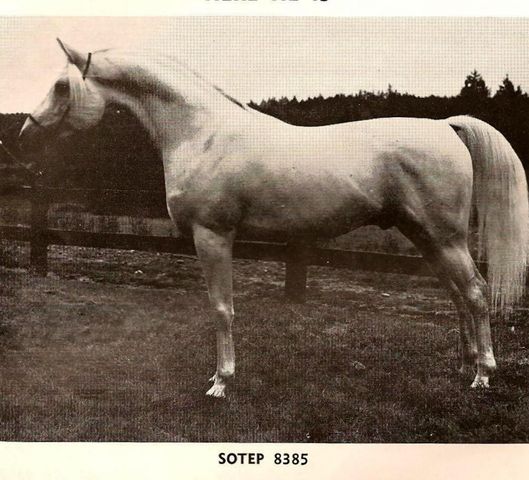
Sotep seemed to have a home for life, but in 1973 the Fords went all-Egyptian in their breeding program and sold all of their non-Egyptian stock in a splashy “sale of Sales” held at the farm. The “*Raffles people” were ready; *Raffles sons were becoming rare. Bill Munson had borrowed and scraped together funds as a back-up to Sitting Rock Farm, considered the top bidder going into the sale. At age 20, Sotep topped the sale at a whopping $90,000, going to Sitting Rock. His six daughters in the sale ranged from $4,500 to $10,000 for yearlings to $14,000 for a three-year old.
Sitting Rock Farm (Madison, NC) was Sotep’s home for the next nine years. His breeding fee was $10,000. The farm was set up for AI, and during that time Sitting Rock alone bred 112 Sotep foals.
In 1982, when Brenda Boddy (Long Lane Farm at Woodstock, GA) received a notice of the Sitting Rock Farms close-out sale, she was in a state of disbelief. She had attended the Lancer sale in 1973 and was completely overwhelmed by Sotep’s beauty and regal bearing. She followed his career closely, checking on his foals, talking with persons who knew him earlier, and day-dreaming that somehow he might come to Long Lane Farm. She knew that Sotep had sired more than 100 champions, and the pull of the auction was not to be denied. The day before the auction, Brenda and her husband (Dr. Evan) and their three sons (Robbie, Kevan, and Andy) drove six hours in a rainstorm to be there. During that long ride, the children were told about Sotep as a “Living Legend” and about *Raffles influence in the breed, and Sotep acquired a sort of magical quality for them. When they finally found Sotep in a corner stall at the sale barn, the magic was quickly dispelled by his appearance. “It just tore your heart out,” Brenda remembers. “Here was this wonderful old stallion, very thin, his legs swollen, stiff, skinned up, and just leaning against the stall walls. But I could look at the head, the finely chiseled head, and the long neck, and the still-level topline, and the good straight legs, and I knew that it was the Sotep I had seen earlier. No one in the family slept that night. Mentally, I wasn’t prepared to buy him, but my heart had already decided to get him.”
Sotep was the last lot of the sale. Just as Bill Munson finished reading Sotep’s pedigree, he appeared. Brenda describes the moment, “You could just see him throw his chest out, and he arched his neck and strutted in there at a trot. He shed 20 years while we watched. He was thin and old and creaky, but he made an entrance like a shining white knight. He knew. He had defied his age. He stomped his foot, and the entire crowd rose and applauded him. The more the crowd responded, the more he strutted and bellowed and finally everybody was crying.”
Bill Munson wiped his eyes and asked for the bids to start. He could not sell the horse and asked someone else to take over, Brenda remembers. “Before I knew what I had said, I came out with a bid of $10,000. Someone else bid $11,000. I said $15,000, and Dr. Munson reached over and slammed the gavel down. He knew I had spent almost all that day in Sotep’s stall and how much I cared for him. He asked me to come up on stage, they handed me the lead line, and I don’t remember much else except that I put my arms around Sotep’s neck and he nuzzled me, and it was as though he knew he was home.
In spite of his strutting and preening, Sotep was quite ill.
This last home for Sotep was no ordinary home. The Boddy’s combined two stalls into one, padded the walls and floor, air-conditioned and heated it, and piped in music. (He preferred country.) Gradually Sotep’s health was restored. He had daily then weekly check-ups by a veterinarian, got lots of vitamins in blenderized food, especially applesauce, and was bred (AI) to a number of mares. They were found not in foal, and a malignant tumor in his testicle was discovered. The Boddys were advised not to try to breed him anymore, and they didn’t, even though he was fully booked for 1983.
Sotep became the favorite of the Boddy children, and they learned the gentleness of an Arabian stallion. They visited him often in his stall, always bringing munchies for themselves and applesauce for him, and would camp out in his stall several times a week. And when Brenda wasn’t able to hold his head in her lap when he lay down to rest, one of the boys held him.
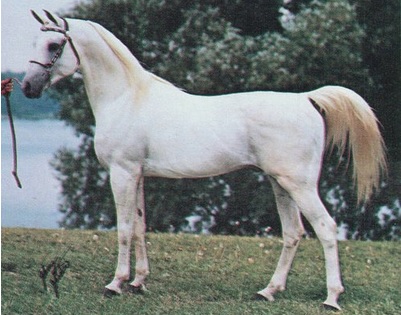
If Sotep was the darling of the Boddy family, so he was of the Arabian horse community. His bloodlines, longevity, and spunk endeared him, even to persons who had never seen him. Brenda answered over 1,000 letters from fans and admirers, and one weekend over 100 people came to see him. Gifts poured in: monogrammed blankets (for summer and winter), handmade halters to match the blankets, and a hand-lettered, gold-trimmed stall sign. Kenny Rogers (whose Beaver Dam Farm is two hours away) called several times to check on Sotep, as did Susan Fleischer (daughter of Walt and Carole Clark), Don Ford, and other former owners.
On March 31, 1984, Sotep died, just a few months short of his 32nd birthday – the last *Raffles foal to be born and believed to be the last survivor. He sired a total of 313 foals, the last born in 1982. Sotep demonstrated an occasional trait of the Skowronek sire line – all of his foals were grey.
In addition to the 100 Sotep champion sons and daughters Brenda Boddy catalogued, Sotep is the sire of five National winners. One of them, NA-Ibn Sotep, is believed to have more halter points than any other horse in the breed.
Carole Clark’s statement on Sotep may sum up his importance to the breed, “Sotep was strictly business, regal in bearing, most tractable and obedient, quiet, strong, and, above all, prepotent. His offspring for us were as alike as peas in a pod.”
Click here to read an interesting 2001 article about the sale of the Sitting Rock Farm.
**All of the articles included in the re-launched Crabbet.com site from the original website, Georgia Cheer, Silver Monarch Publishing and The Crabbet Influence magazine are shared here with permission of Georgia Cheer given May 16, 2012.**
Last Updated: April 5th, 2019

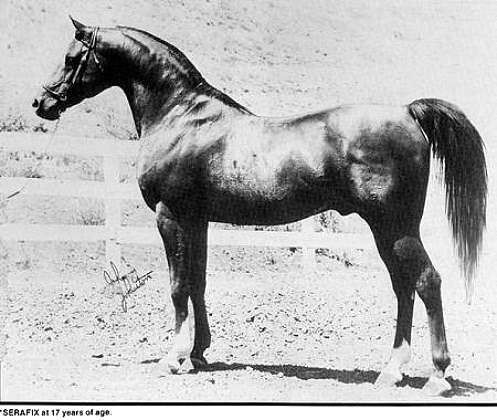
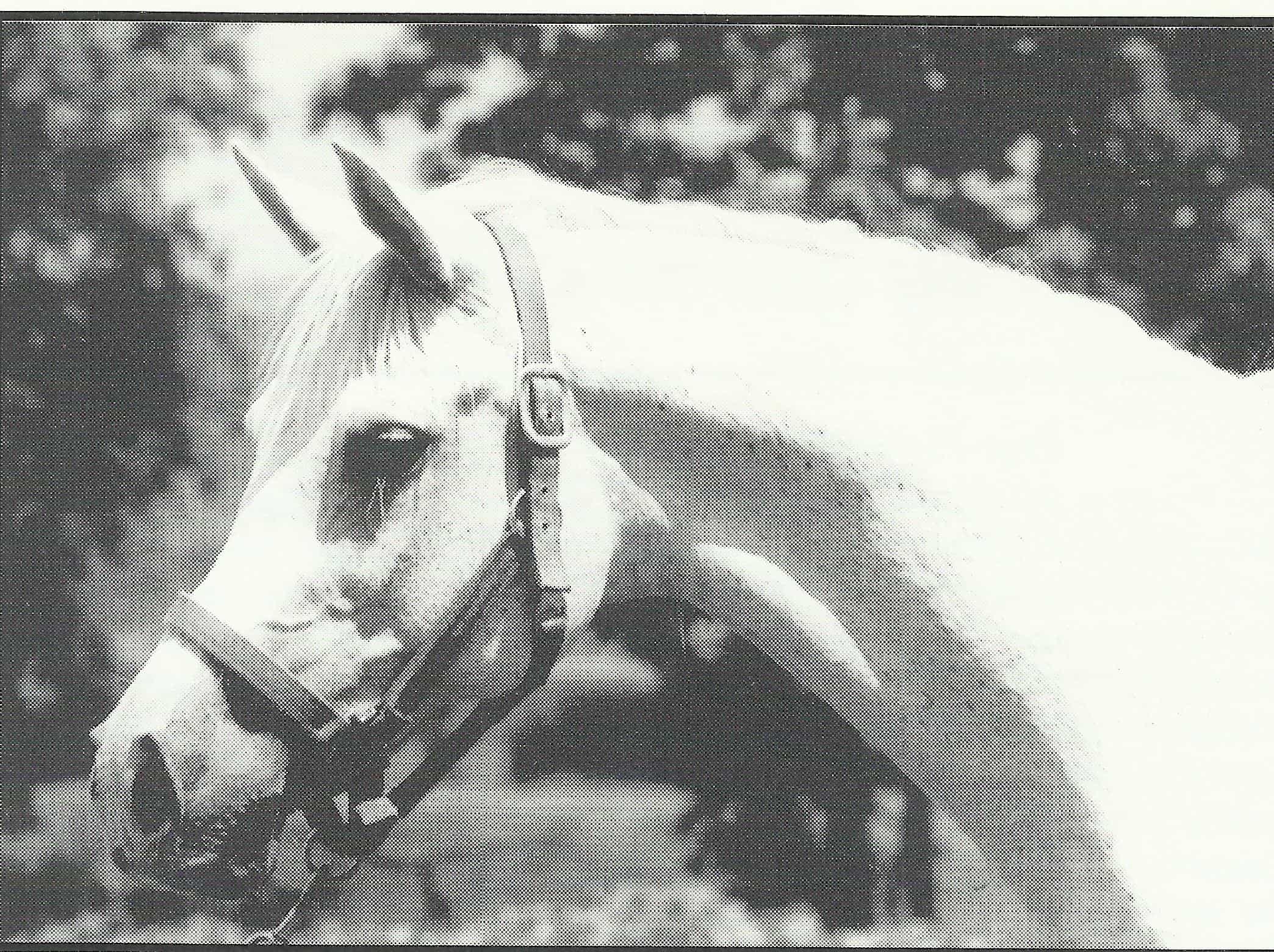

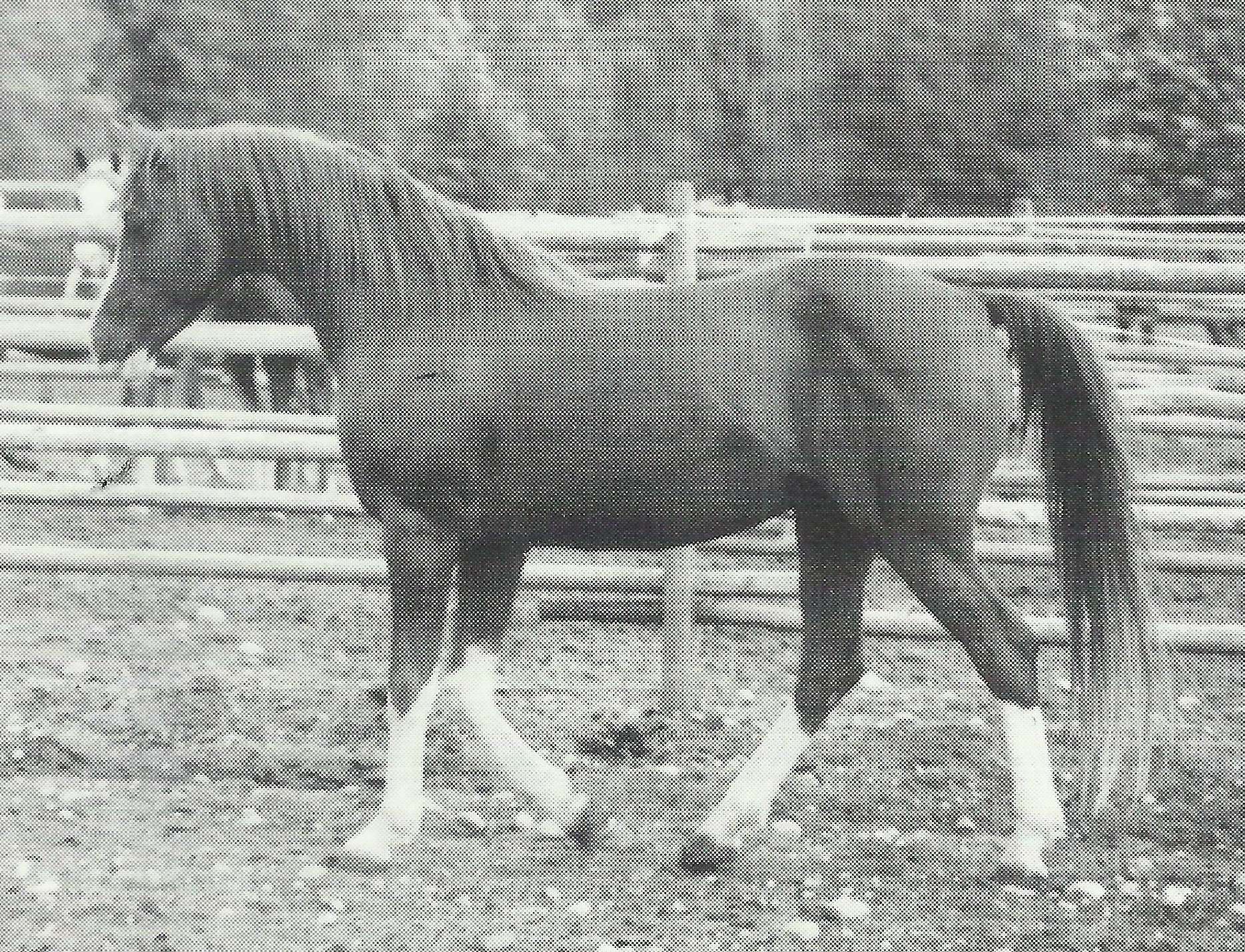
Dr. Lyle McNeal says
I worked for Alice Payne back in the early 1960's at her Asil Arabian Ranch near Chino, CA. My family were also noted Arabian breeders in NW Montana too. I also worked at the Kellogg Arabian Horse Unit in the 1960's too, and showed in the weekly Sunday horse shows there. I was also a graduate from Cal Poly Pomona in Animal Husbandry back in the early 1960's. I could go on, but Alice's Arabs were very nice too. I also showed horses for the McCoy Arabians in that area too. I'd better close down. I'm in my 80's and now retired.
Doc McNeal
Angela says
That is fantastic! I'd love to see photos from your family's breeding program. Let me know if it's OK to reach out to you.